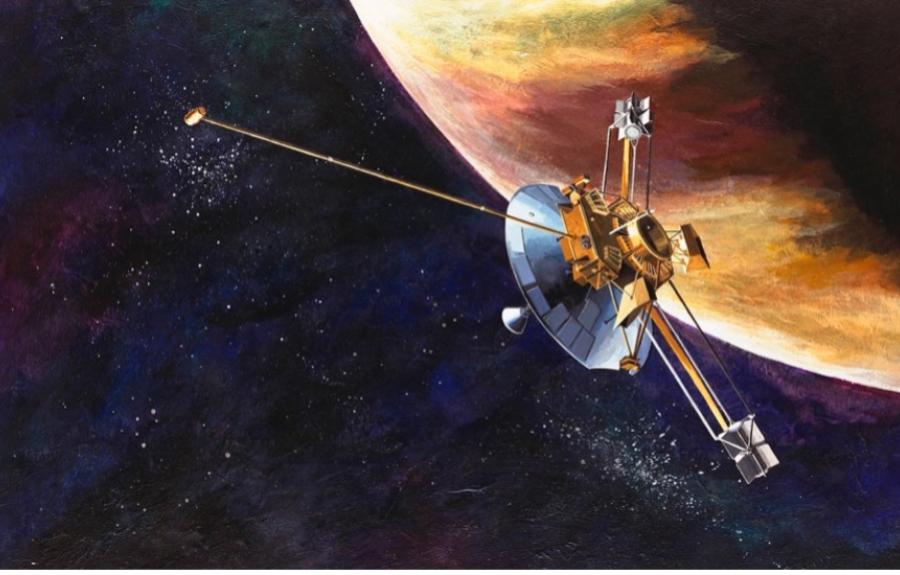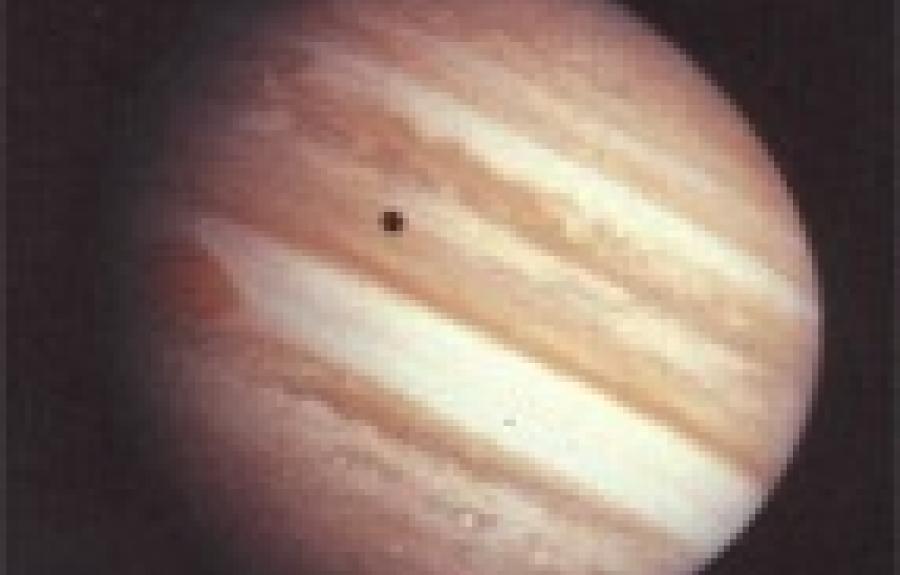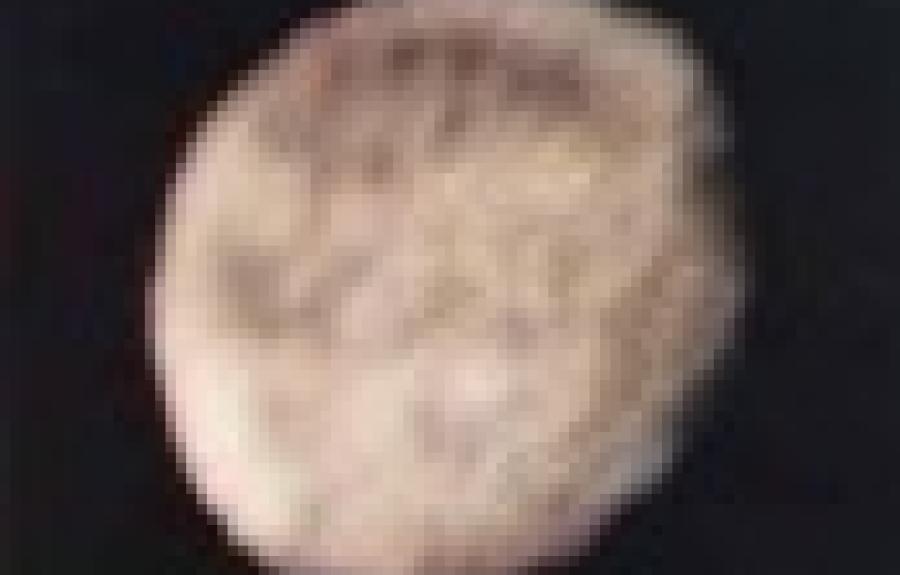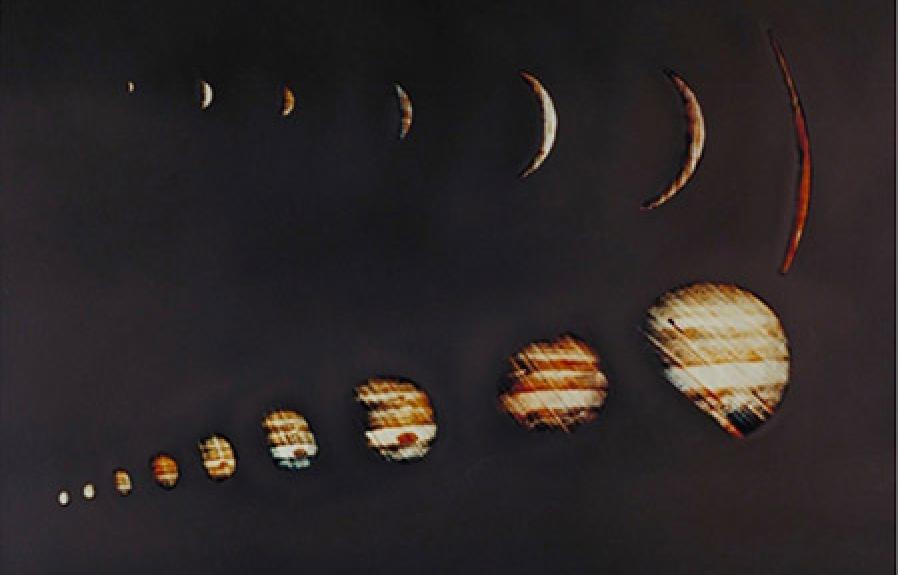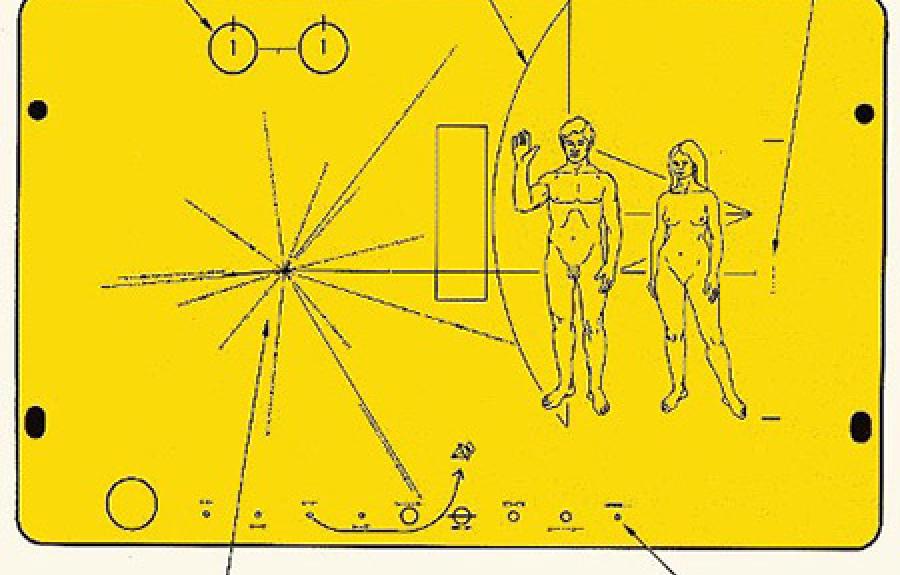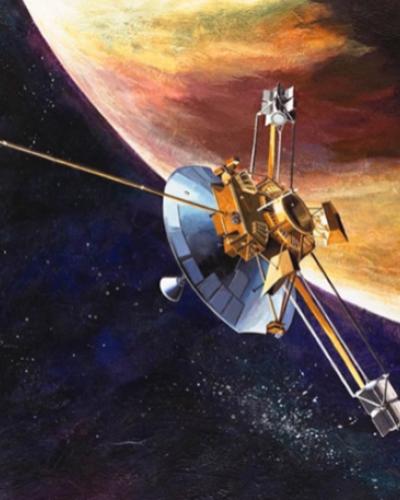Fifty years ago, on March 2nd, 1972, Pioneer 10 touched off from Cape Canaveral on humanity’s first mission to the outer solar system.
Just five months before the first moon landing in 1969, NASA approved a pair of spacecraft designated Pioneer F and G. They would use entirely nuclear power and travel faster than any previous manmade object. They would also contain a wide range of instruments, hoping to account for just how little was known about the outer solar system.
As it sped into a windy night sky aboard the Atlas Centaur launch vehicle, and Pioneer F became Pioneer 10, it was unclear how many dangerous particles might await in the asteroid belt. But Pioneer 10 emerged almost entirely unscathed.
Once at Jupiter, Pioneer 10 photographed the largest Jovian moons, Callisto, Ganymede, and Europa, and only missed Io when the photopolarimeter succumbed to Jupiter’s intense radiation.
Jupiter, top, and moon Ganymede, bottom | NASA
Pioneer 10 studied the radiation belts around the equator of Jupiter, as well as the atmosphere and magnetosphere. The spacecraft communicated across a larger distance than ever before to send back “real-time” photos—after a forty-five-minute delay, a limit imposed by the speed of light.
At its closest approach, Pioneer 10 passed behind Jupiter, leaving the team to wait in apprehension until the spacecraft could regain a clear line of sight. Lyn R. Doose, part of the imaging team, described the moment: "We watched… as the signals came back from the distant planet. A single bright spot appeared, and then another, until a line gradually built up.” A crescent: Pioneer 10 watched a Jovian sunrise.
Bottom, from left to right, is Pioneer 10's approach to Jupiter; top, from right to left, is the crescent sunrise and departure | NASA
Though their photos may be less glamorous than the Voyagers’, the Pioneers gave us the very first close glimpses at Jupiter, four hundred years after Galileo aimed his telescope at the sky.
The First Interstellar Message Plaques
Just months before the launch of Pioneer 10, it was suggested that a message plaque might be placed on the spacecraft. After all, the Pioneers would become the first-ever man-made objects with enough speed to escape the Solar System.
In a short timeframe, Carl Sagan, Frank Drake, and Linda Salzman needed to devise a visual representation of humanity, for a theoretical audience they could know nothing about. We may safely assume only one thing: that any alien lifeform seeing the plaque must have been smart enough to find Pioneer in the first place. They would likely grasp the fundamentals of physics and math, the only languages that transcend across space and time.
Carl Sagan and co. settled on a representation of two humans and a silhouette of the spacecraft, accompanied by a few maps to point out home—nearby pulsars and our solar system.
The Pioneer plaque, made of aluminum and dipped in gold, created by Frank Drake, Carl Sagan, and Linda Salzman | NASA
In the top left of the plaque, the team first selected hydrogen, one of the most basic elements in the periodic table, to serve as the basis for the math on the plaque. The transition between the two hydrogen atoms pictured emits radiation with a certain period and wavelength. The wavelength, 21 centimeters, is used to show that the woman’s height is 8 times 21, making her around 5.5 feet tall, while the period of 0.7 nanoseconds helps denote the periods of the pulsars and distances of planets.
With maps of pulsars and surrounding planets, the hope was to provide our return address—even long after any human might be around to receive the reply.
When communication with Pioneer 10 was lost in 2003, the mission was 28 years past its original design. The spacecraft still flies, now twelve billion miles from home. On it remains the golden plaque with a pulsar map and two human figures, one hand raised in greeting. In two million years, they will wave to the red star Aldebaran, and to any life that dares to brave the expanse as we did.
Our Place in the Universe
At the time of Pioneer 10’s launch in 1972, we had not yet detected any planets beyond our own Solar System. As of 2022, we’ve detected nearly five thousand. Though the odds of aliens finding the Pioneer plaques are certainly slim, it may be possible to find alien life ourselves. The was founded for this very purpose, and its fellows study the spectral signatures of exoplanet atmospheres as well as exoplanet evolution and more. With each day that passes, the and its peers press farther than ever before in the search for extraterrestrial life—closer to knowing our planet has never been alone.

